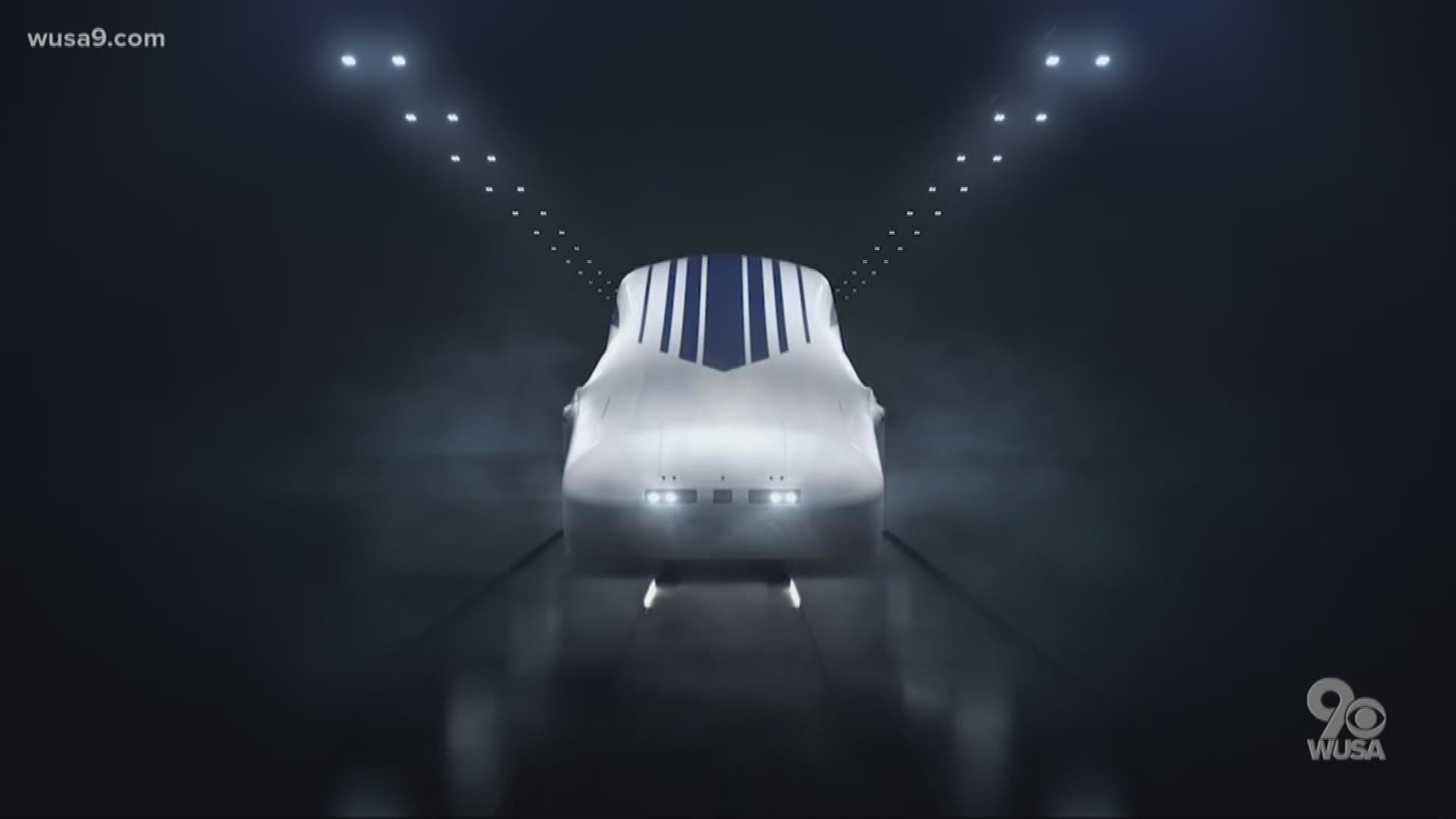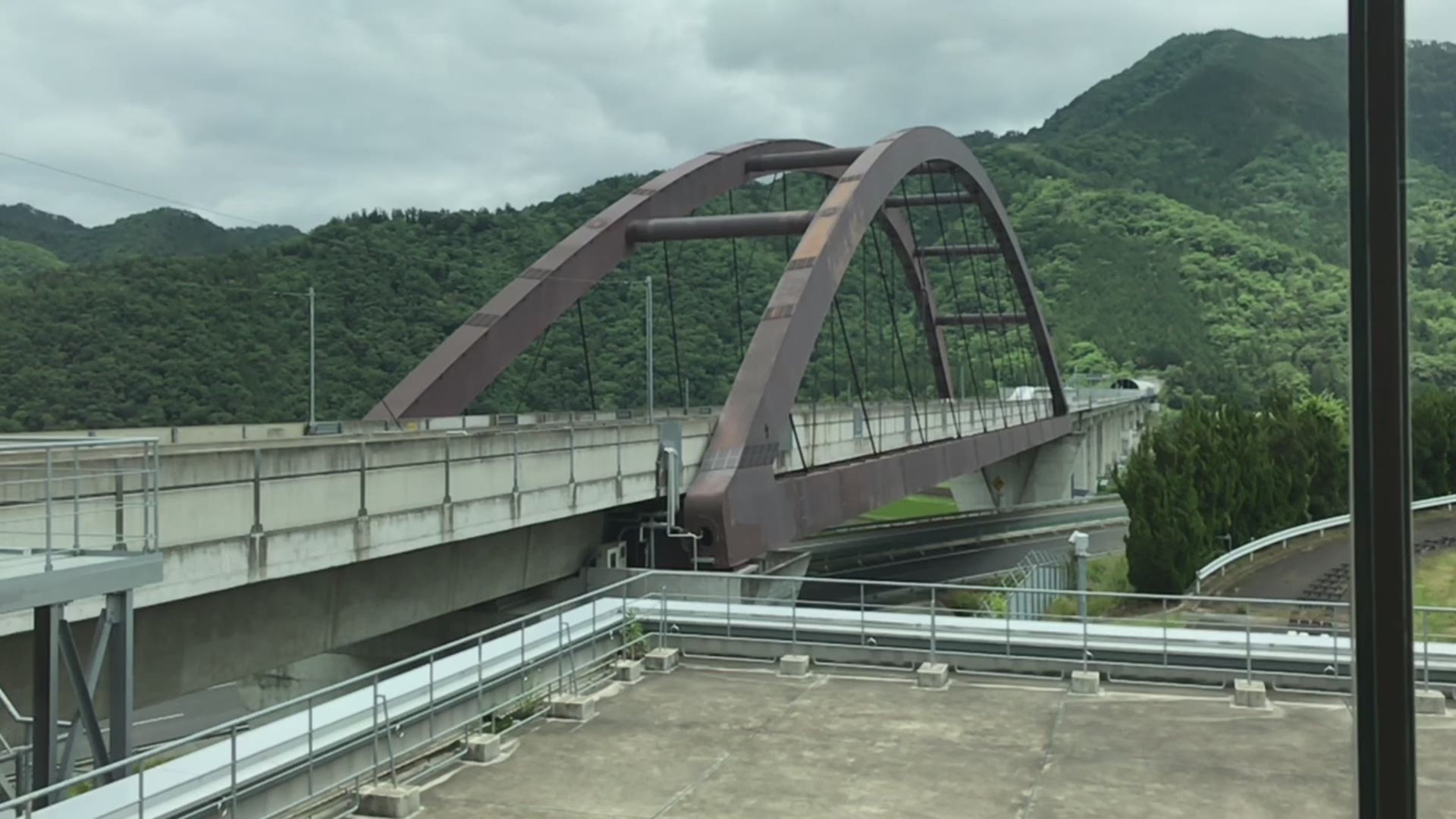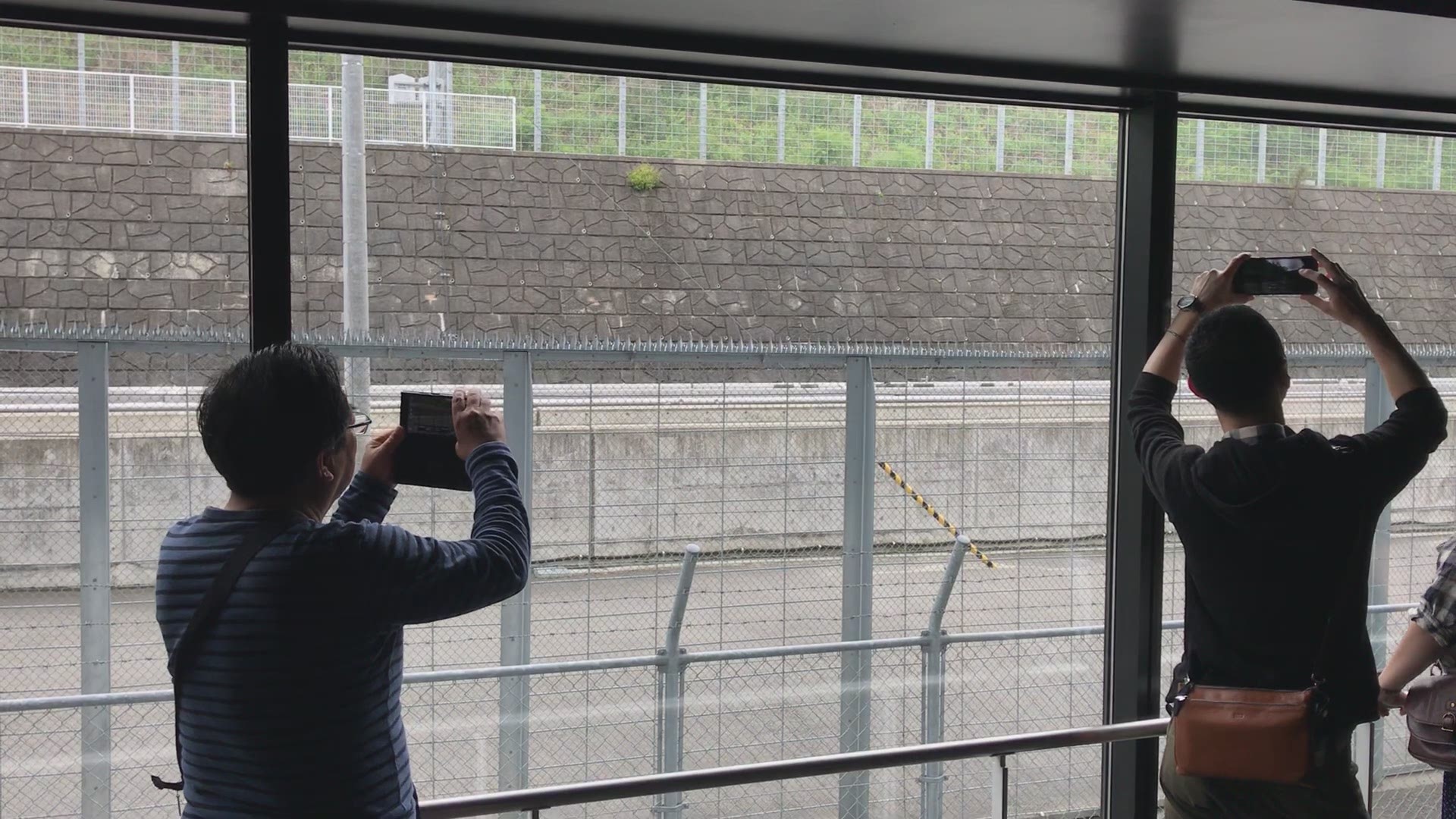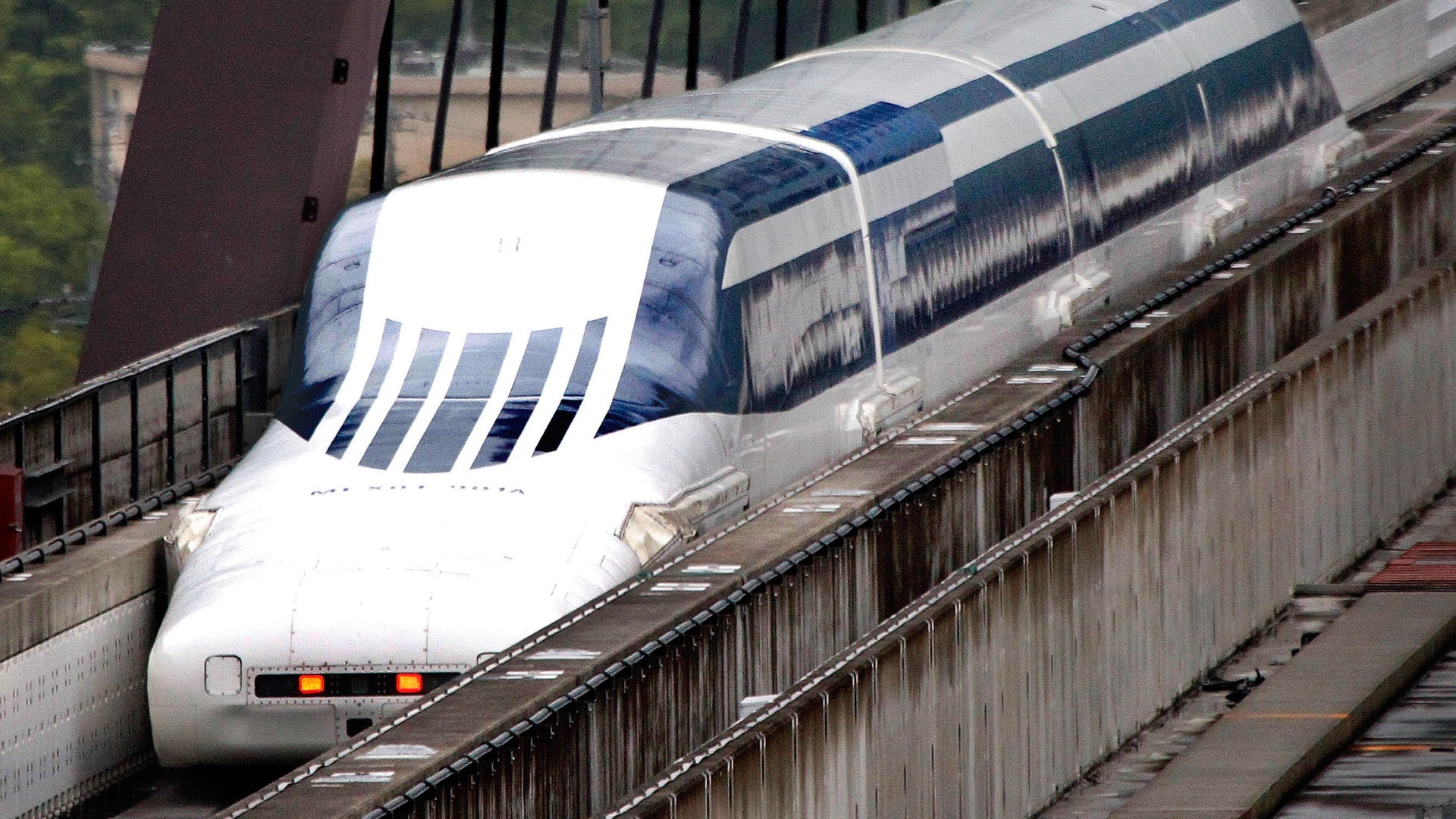A 311 MPH floating train could link DC & Baltimore – neighbors, the NSA & a nation in gridlock take notice
An American version of the world's fastest train could essentially make D.C. and Baltimore part of the same city. But there are obstacles in its path.

Could the answer to endless hours on BW Parkway, calamitous commutes, and a region’s rage against the trappings of traffic come from a breathless feat of engineering, a bullet train found floating above the Japanese countryside?
We may well find out – as a bullet of quicksilver announces its arrival from the iridescent streets of central Tokyo, to the stately corners of Mount Vernon Square in Washington.
Federal authorities are now within months of deciding the fate of a project nearly 20 years in the making – a proposed high-speed train linking D.C. and Baltimore in 15 minutes.
The dream is an American version of the world’s fastest train, currently in operation within the shadow of Mt. Fuji.
It is an extraordinary and ambitious vision of the future, a mode of transportation levitating past Shinto shrines and tranquil terrace farms at 311 mph.
The train is called an SCMaglev, an advanced bullet train that uses superconducting magnets to levitate four inches above the ground and travel at record speeds.
Backers of the U.S. project aim to challenge decades of decline in American infrastructure and to revive a dispirited and deteriorating Northeast Corridor.
Yet challenges exist. Among them, neighbors faced with the prospect of new elevated SCMaglev tracks near their homes.
Opponents in Prince George’s and Anne Arundel counties remain convinced that a proposed tunnel with trains propelled in the blink of an eye will inevitably lead to structural damage of thousands of houses above. Those accusations are strongly rejected by the project’s engineers.
But the forces moving behind the possible construction of a 311-mph train between D.C. and Baltimore are potentially more consequential and far-reaching than the voices heard in the quiet suburbs of the capital.
Video: SCMaglev in slow and fast motion moving at 311 mph.
Power brokers in the diplomatic quarters of Tokyo and Washington see the floating train as a way to equalize an alliance – a union under greater scrutiny during the Trump administration.
America sends Japan billions of dollars in defense and naval power Japan is unable to match on its own.
The scientific arena of building levitating trains, sparking economic growth in the process, is an area where Tokyo feels it can return the favor of advanced defense assistance – a tech tradeoff unique to each country.
The stakes of the decision to build or not to build are indeed inevitably linked to an underlying and uncomfortable question: can America build exceptional infrastructure, once again?
Forgotten are the triumphs of the subways, the incredible feat of the Panama Canal, or the early promises of the interstate highway system.
Most struggle to name even one revolutionary American transportation project in their lifetimes.
Backers say we must build – before it’s too late. Before congestion conquers, and America can no longer ascend to the apex of transportation innovation.

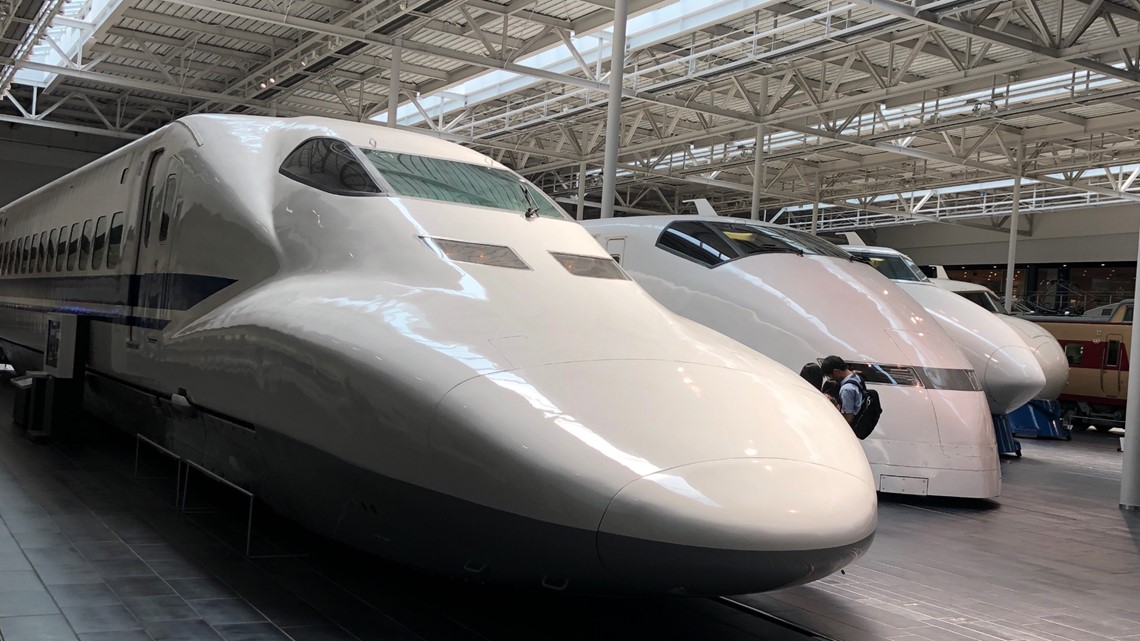
A year-long WUSA9 investigation into the intricacies of the SCMaglev proposal reveals a complex and compelling series of storylines now set to influence 2020 building decisions in D.C. and Maryland.
Reporting efforts encompassed interviews with more than 40 stakeholders, including current and former transportation officials, a U.S. intelligence official authorized to discuss the project, residents in the Washington region, and neighbors near Japan’s SCMaglev.
The National Security Agency and NASA have also expressed interest in the project’s fate, voicing a series of security and construction concerns first reported by WUSA9 in September 2019.
Lawsuits filed in Tokyo and its neighboring region have amassed hundreds of plaintiffs to fight floating train construction, legal developments previously unreported in the United States.
After traveling to Japan and boarding the world’s fastest train, it’s difficult to be anything less than dazzled, convinced that America can and must do better.
But the U.S. decision efforts are deliberate – a process where all sides now agree the fate of American imagination and ingenuity cannot simply float away.
Watch below: SCMaglev shoots past spectators, in the blink of an eye.
The Route: Will A Floating Train Be in My Backyard?

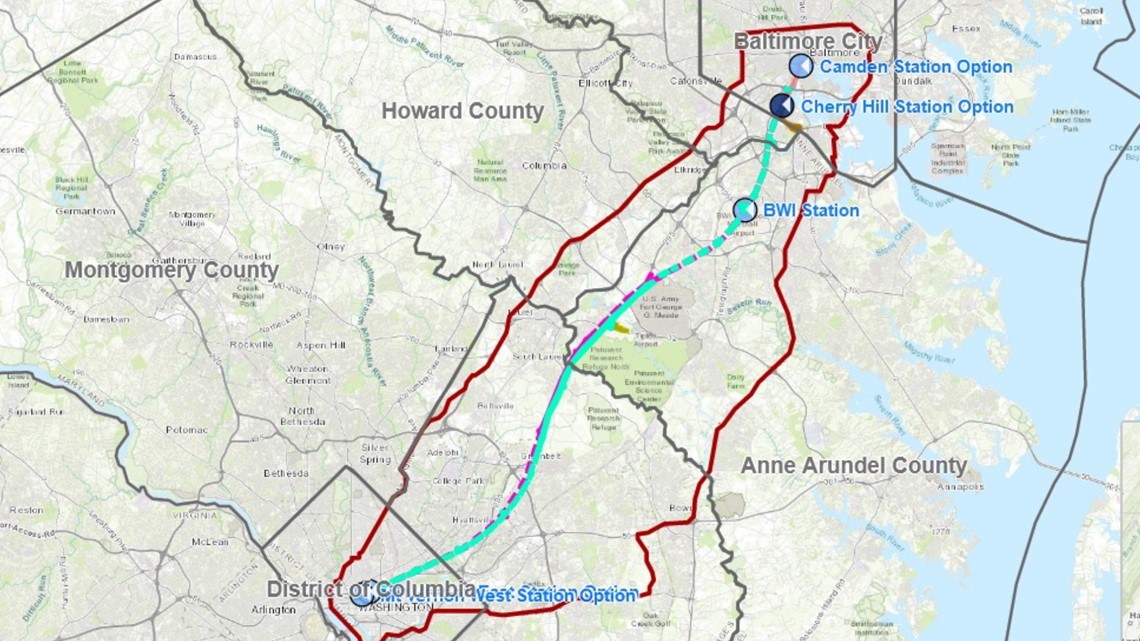
The easiest way to envision the proposed path of the D.C.-Baltimore SCMaglev is to think of BW Parkway on a map.
The floating train would largely follow the same, familiar route.
No homes would be demolished, according to preliminary plans submitted to the Maryland Department of Transportation (MDOT) and Federal Railroad Administration (FRA).
As backers of the train describe the need to build, engineers and executives ask the public to think of BW Parkway in its most aggravating and enraging state.
Few enjoy the reliably riling routine of driving the parkway in rush hour. Thousands crawl between two cities that seem so close, yet often require more than an hour to reach, with some miraculous maneuvers along the way.
Therein lies one of the motivations for the construction of the SCMaglev, or simply, maglev – a way to open a congested coronary artery.
“We need it because we’re drowning in absolutely abysmal traffic that is ruining our lives,” said Wayne Rogers, chairman and CEO of the private company known as the Northeast Maglev.

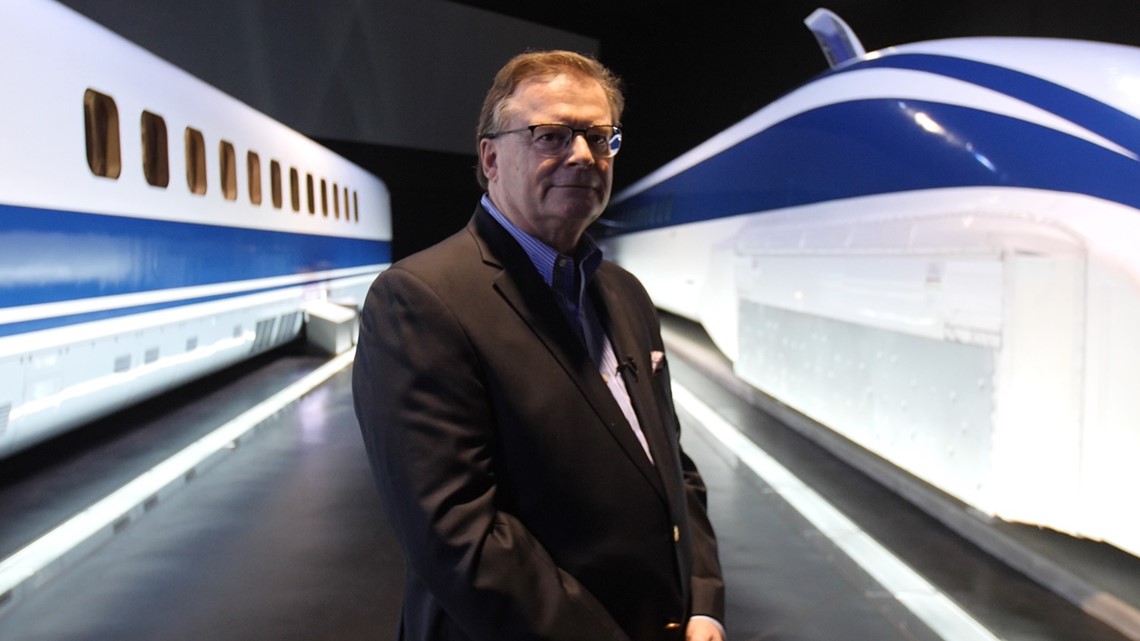
“Nearly all our roads fail,” Rogers said. “We have the worst and longest commute in all of America, and I feel confident we’ll get approval from the federal government.”
Rather than relying on Amtrak, whose tracks cannot carry trains at more than 150 mph, Rogers has proposed an entirely new route.
The train operated by the Northeast Maglev would run mostly underground, starting near the recently restored beaux-arts Carnegie Library in D.C.’s Mount Vernon Square.
The end station is proposed for Baltimore’s Camden Yards, or Cherry Hill, a neighborhood three miles from the city’s downtown core.
An underground station at BWI Airport is also planned.
Documents show the maglev’s tunnel would run between 80-260 feet underground, a depth comparable to seven-24 stories below the surface.
The maglev would emerge above ground near the middle of its route, specifically near homes in northern Prince George’s and southern Anne Arundel counties.

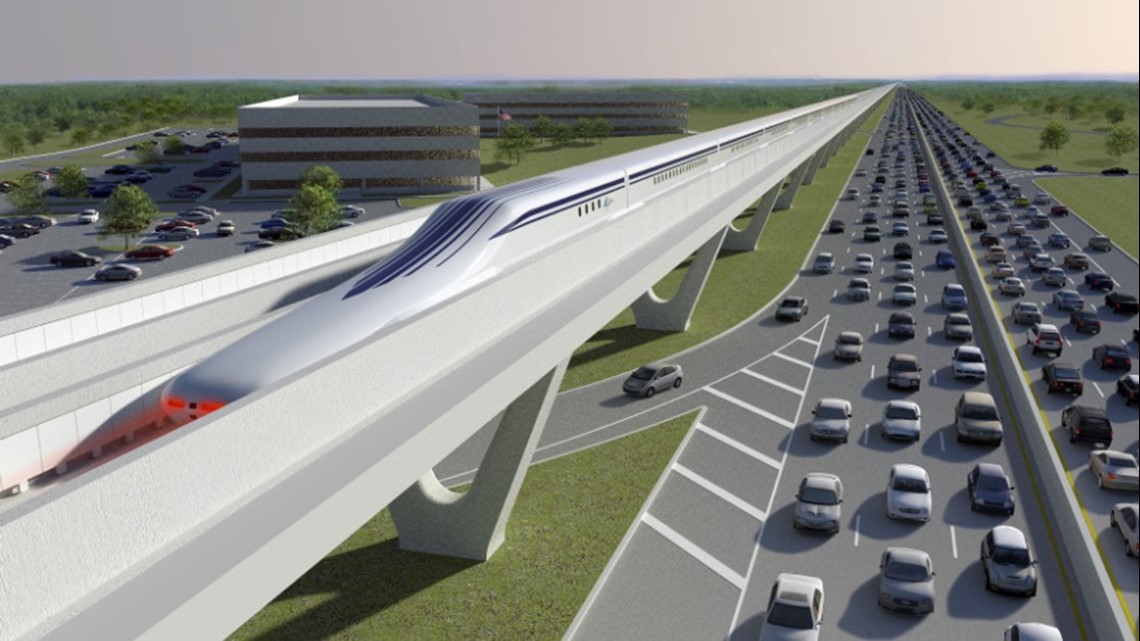
Neighborhoods near Proposed Elevated Tracks
According to the proposals, elevated tracks would run along one side of BW Parkway, potentially within feet of backyards in Laurel, Maryland.
The neighborhoods impacted will ultimately depend on which side of BW Parkway authorities select for construction. That is, if the federal government agrees to green-light the project at all.
Neighborhoods Potentially Impacted on the West Side of BW Parkway:
Communities between Laurel and Maryland City potentially impacted:
- Sumner Grove
- Crestleigh
- Oxford Green
Neighborhoods Potentially Impacted on the East Side of BW Parkway:
Communities between Laurel and Fort Meade potentially impacted:
- Villages of Montpelier
- Laurelwood
- Birchwood Gardens
- Pheasant Run
- National Security Agency
- Argonne Hills
- Colony Fairfield
Tracks on the west side of the parkway would approach within 65 feet of homes. Tracks on the east side would approach within 80 feet.
Diagrams and construction summaries show no homes or commercial businesses are slated for demolition.
The preliminary measurements and figures are found in the project’s most recent documents, reviewed by WUSA9.
The documents also show 1,117 to 1,204 homes from Washington to Baltimore would be found above the maglev’s main tunnel.
In an interview in Nagoya, Japan, Rogers responded to critics concerned with potential vibrations from future tunnels, as well as those fearful of above-ground maglev noise.
“There won’t be void vibration, there won’t be noise,” Rogers told WUSA9. “They will not even be able to know that project is deep underground, below their homes. I mean we’re talking about depths of more than 100 feet below the ground. So, one wouldn’t even know it.”

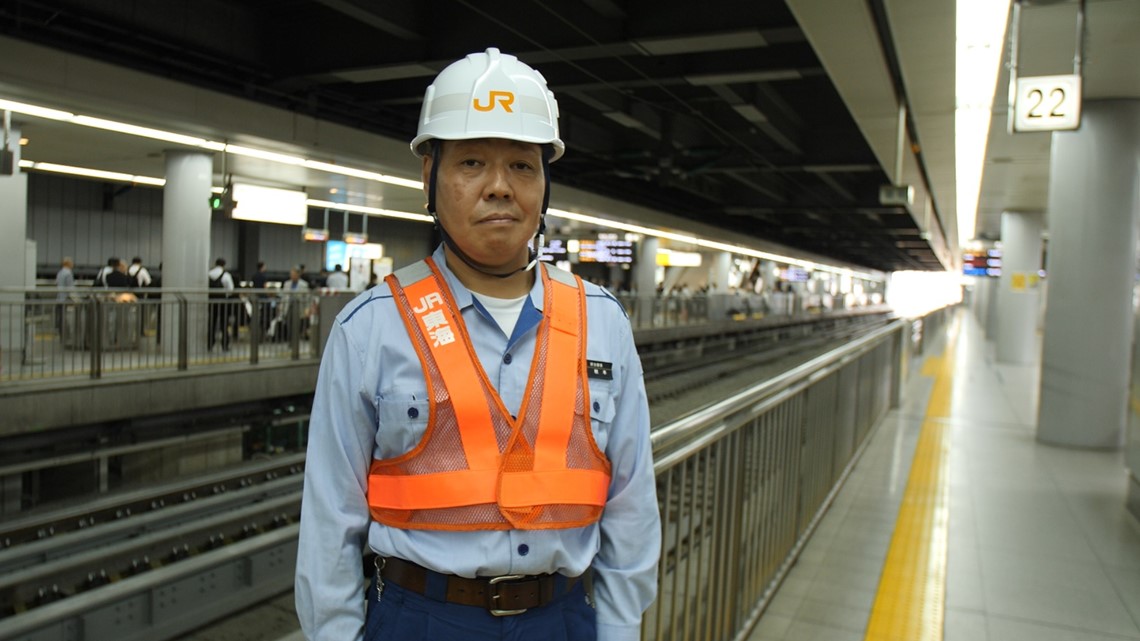
While a central goal is to make maglev construction and operation imperceptible at the surface, specific engineering plans addressing underground vibrations have not yet been released.
Details on how the concerns will be addressed are set to be disclosed in a draft environmental impact statement in early 2020.
As for the sound of a maglev near homes – one of the ways to gauge its volume, potential disturbance and integration into a community, is to head to a quiet Japanese village and wait.
What Do the Japanese Think?
When you walk near soaring elevated tracks for Japan’s maglev, the most striking moment arrives when a train moving at 311 MPH sounds exactly like a faraway gust of air.
No louder than a passing car.
Strict Japanese environmental standards cap disturbances near residential areas. Decibel measurements of the maglev are comparable to the noise of car driving on a highway.
Japan’s maglev has no wheels touching steel rails, and none of the vehicle connects to a web of overhead wires. Its movement typically happens too quickly for anyone to open an iPhone camera.
The hamlets of Yamanashi, Japan assume the role of communities in Prince George’s and Anne Arundel counties and what they may face in the coming decade.
Yamanashi is an area outside of Tokyo, where families trace their ancestors’ settlements by the passage of centuries, not years. In this place where so much seems timeless, change from the train is largely welcome.
“I’ve test-ridden the maglev myself, and it’s wonderful,” said Yamanashi resident Yuichi Osano in an interview. “The maglev is actually quieter than a regular bullet train, and there’s minimal vibration. So, I don’t think it will be a problem.”


Osano, 69, described how his family moved to the region five generations ago. They’ve witnessed dramatic changes since the Edo Period and shogun rule. When asked what he would say to apprehensive Americans, he described his feelings about the train’s unusual operation.
“It’s not that I don’t have any worries about the maglev,” Osano said. “I’m used to trains with a driver, so this train’s remote-controlled aspect is a bit unnerving. But it’s not that scary to ride.”
Down the street, Yoshiharu Horino voiced similar support. The maglev passes, unnoticed, on a bridge 100 feet above his property. While tourists marvel at the machine now married to his land, Horino, 89, pays no mind, and tends to his onions, as he’s done for decades.
“I was one of the first locals to ride it, since I’m a landowner,” Horino said. “There’s nothing to fear. You can’t say you’re for or against until you try riding it.”


What's It Like to Ride the World's Fastest Train?
You know you’re not on the Acela anymore when the maglev announces it is floating.
“The train will now move into levitation mode,” a quiet voice announces in English. “Listen to the transition between wheel mode, and levitation mode.”
The train inches out of the station using slow-speed tires. But as supercharged magnetic forces begin allowing the train to float, no seatbelts, strong nerves, or clutching of armrests are required.
“You can move about no problem, and get yourself a cup of coffee,” Rogers of the Northeast Maglev said. “But whether you finish the coffee by the time the trip is over, well, that’s another story.”
Video: WUSA9 reporter Mike Valerio takes us inside Japan's SCMaglev
And that is entirely the point – a trip so fast that D.C. and Baltimore seem part of the same city. A journey too quick to take a seat, walk to the café car, buy and enjoy a coffee.
Backers envision the cities reliably linked by the maglev. In effect, merging both metropolitan areas into the same economic engine.
The ultimate ambition is not only to connect the two destinations in 15 minutes, but to eventually tunnel the maglev from Washington to New York City – with the goal of a one-hour train ride from beginning to end.

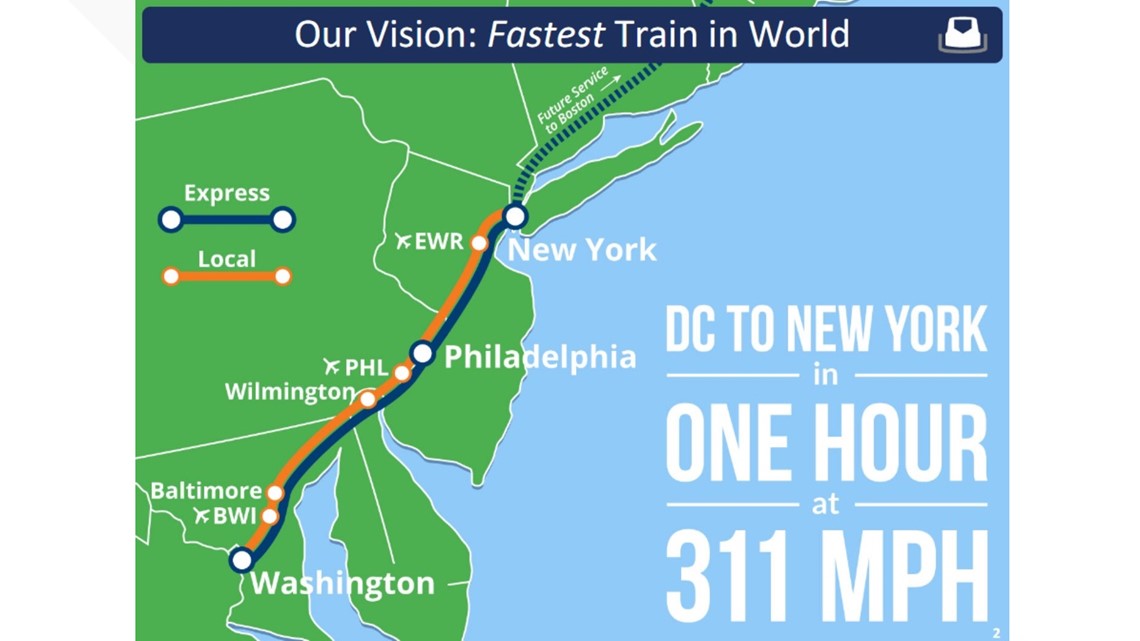
“Before you actually ride the maglev here in Japan, you think, ‘How could we build this in America?’” Rogers said. “But by the time you get off and are back on the ground, you think, ‘How can we not build this in America?’”
In Japan, Some Opposition From Neighbors
In a small café near a modest Yamanashi train station, Izumi Yamanaka immediately seizes the chance to speak about the maglev – and her less-than-popular point of view.
She’s lived in Yamanashi for 50 years. She’s polite, proper, but far from deferential to the area’s support for the train.
“To be blunt, older people simplistically buy the PR that you can get to Tokyo in 30 minutes or Nagoya in 40 minutes with the maglev,” Yamanaka began.
“Surely, for infants and small children, there is some kind of long-term impact from living near the high-electricity lines and vibration of the maglev. That worries me,” she said. “Until we see legitimate scientific proof that the maglev is safe, that should be the first priority.”


Engineers in Japan and the United States said there is no evidence of adverse maglev health effects.
Documents signed off by the Maryland Department of Transportation show the train’s electromagnetic fields register at a relatively low level, 1/50th the strength of international limits.
Officials with JR Central, the private Japanese company behind the maglev, said the train has operated in Yamanashi since 1997. No harmful health effects have been reported.
Yet Yamanaka said a key burden had not been met. She hasn’t seen conclusive long-term medical studies on the relatively new technology.
“We’re concerned about our grandchildren’s generation, about being able to grow up in a natural and healthy environment,” she said. “That’s a basic human need. That’s why we need to talk about this problem.”
Two lawsuits in Japan against the maglev are also underway.
In May 2019, eight plaintiffs demanded a halt of construction. The suit asserts developers ignored the welfare of nearby residents and new maglev construction has dramatically devalued home prices.
A May 2016 lawsuit includes the backing of 700 people. They demand the government withdraw the maglev’s certification, arguing the project is unnecessary, causes environmental damage and is based on careless engineering assessments.
JR Central denied the lawsuits’ allegations – pointing to Japan’s strict safety standards and the company’s motivation to build safe and reliable rail systems.
What Do People near the Proposed D.C.-Baltimore Maglev Route Think?

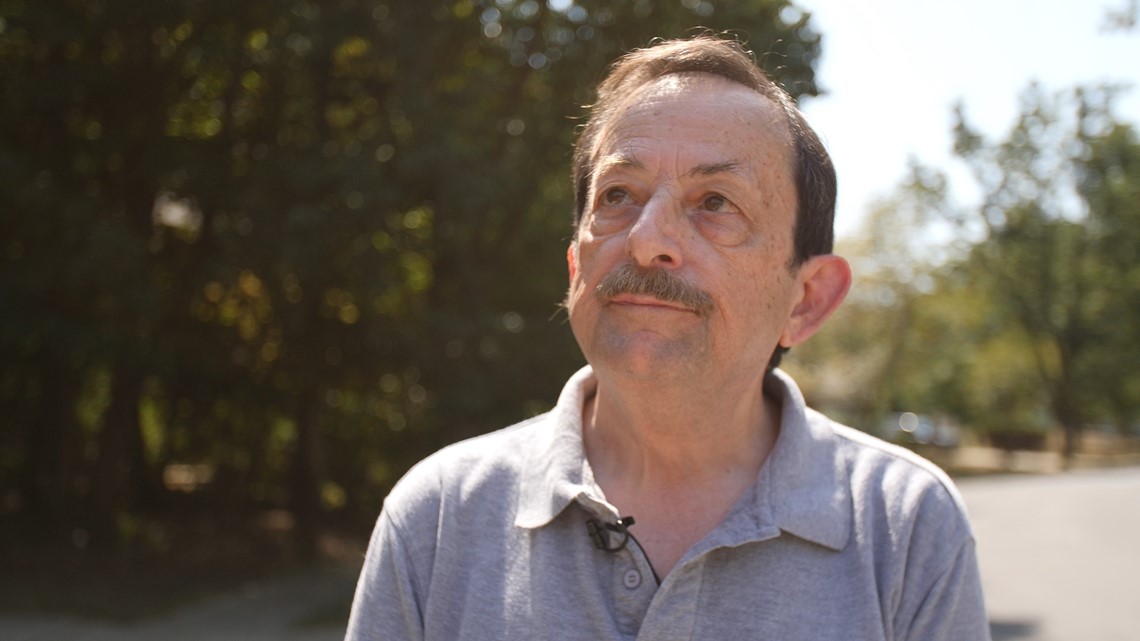
“I don’t want America to fall behind,” said Frank DiPalma, as he looked out beyond his pristine property within the Montpelier Woods section of Laurel.
“I served in the Navy for 25 years, and I love this country. But I want something built right,” he said. “I just don’t think I can get onboard with this train.”
DiPalma’s perspective reflects an impression often found between Bladensburg and Baltimore: while residents recognize America is losing a race to rejuvenate its infrastructure, there may be more convincing to do in order to bridge opinions on an American maglev.
There is palpable joy found among the commuter class of the Acela corridor – professionals who marvel at the prospect of world-class train travel.
“From Mount Vernon Square to Baltimore, without rickety MARC trains, I’m sold,” said Janelle Spainower as she waited for her train home in Union Station. “Our trains are a joke; the rest of the world is laughing at us.”
Yet the story of homeowners near the maglev’s potential path is more nuanced, often colored by apprehension and anxiety.
“No one wants to look out their window at a maglev train,” said Virginia Simmons, whose backyard in Laurel’s Sumner Grove neighborhood may eventually border maglev tracks.
“It’s not all about me and my house and what I want for my family,” she said. “It’s really about what’s best for the community, too.”


The issue inevitably returns to the lack of maglev stops planned for Prince George’s County. Developers say the physics of the train’s acceleration prevent it from speeding up in Washington and then abruptly slowing as it reaches the nearby suburbs.
Yet in clear contrast with homeowners’ hesitations, Maryland’s state-wide branch of the NAACP enthusiastically threw its support behind the project this year.
Leaders of the civil rights organization touted the expected 74,000 construction-related jobs and 1,500 permanent positions as pathways to the middle class for minority residents.
“The NAACP Maryland State Conference has an extensive history of ensuring Maryland’s minority populations have equal protections and are included wherever opportunities that create benefits are concerned,” said Gerald Stansbury, president of the Maryland NAACP State Conference. “We will work with Northeast Maglev leaders to regularly discuss, plan and participate in efforts where citizens can remain informed, have their issues heard, and secure labor union apprenticeships, and various other jobs.”
Yet the NAACP endorsement drew backlash from residents like Nichelle Shaw of Hyattsville. Her home in the city’s Woodlawn neighborhood could be in an area currently envisioned above a proposed maglev tunnel.

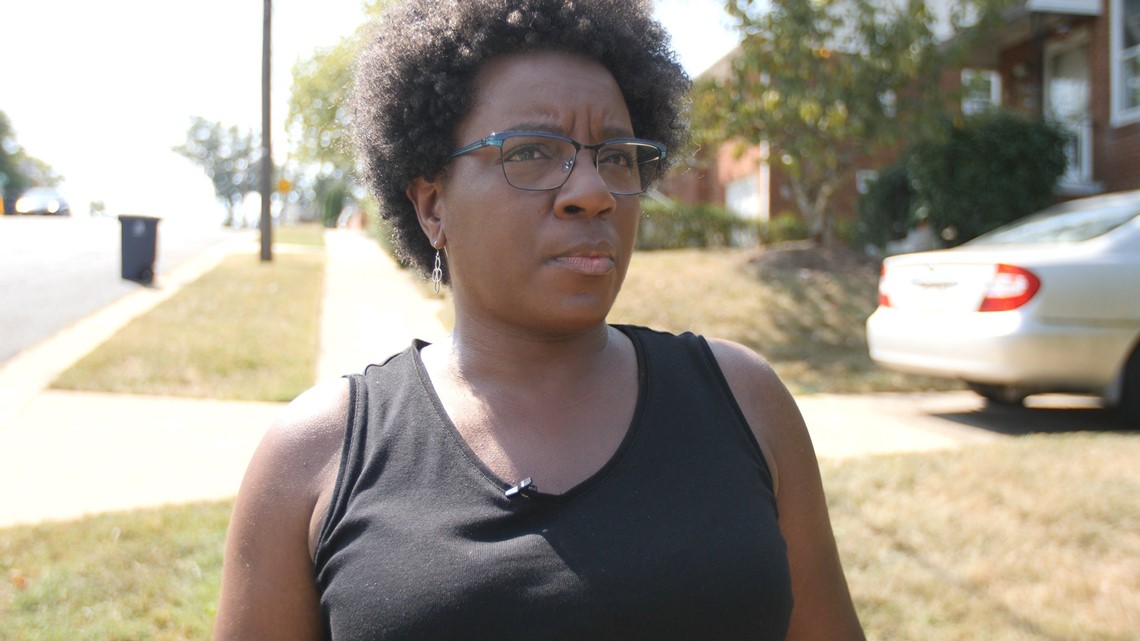
“I called the Prince George’s chapter of the NAACP, and they told me, ‘Well, it’s going to bring jobs,’” Shaw said in an interview. “And I said, ‘But it’s going to do damage to my neighborhood.’”
Representatives from the Northeast Maglev reject those sentiments, asserting the tunnel boring machines will be the same equipment used to dig beneath the Anacostia River for the WMATA Green Line in 1985.
Besides the maglev tunnel, Shaw said she remains unconvinced the project is right for the region.
“I’m not saying there’s something wrong with the idea of having rapid transit, and that sort of thing to alleviate congestion,” Shaw said. “I’m for the Purple Line. I understand how that helps us here in Prince George’s County. I think the maglev helps people who want to get to New York in an hour. I don’t understand how it helps us Marylanders.”
Where do We Stand Now? What’s the Timeline?
Six thousand miles away, Japan maintains a watchful eye over the progress steadily produced by the Northeast Maglev in America.
Observers expect a final decision for the D.C.-Baltimore project in late 2020 – a choice that could trigger consequential decisions overseas.
According to officials in Tokyo, documents provided to local stakeholders, and interviews with the Northeast Maglev, if federal approval eventually arrives, Japan is slated to finance roughly half of the more than $10 billion construction cost.
Exact parameters of the financing have not been established with the state-owned Japan Bank for International Cooperation (JBIC).
But the assistance from Japan increases the project’s viability, as Tokyo bets on its own technology to spark a new economic engine in the U.S.
“If the SCMaglev system is built between Washington, D.C., and New York, infrastructure building costs aside, the system would be profitable,” said Yoshiyuki Kasai, chairman emeritus of the Japananese maglev operator, JR Central.
“JBIC offering this public loan is really an expression of the Japanese government’s commitment to the U.S. – Japan alliance.”
While the final decision rests with the Federal Railroad Administration, significant hurdles must be cleared with local stakeholders and potentially affected agencies.
Baltimore city officials prefer a station in Camden Yards, not farther away from the downtown core in Cherry Hill. But a station within walking distance of the Inner Harbor would add $1.4 billion to the total cost.


The National Security Agency, NASA and the U.S. Secret service all have facilities near BW Parkway, and have asked for security and scientific concerns to be addressed.
NASA officials declared in definitive terms that sensitive equipment at Goddard Space Flight Center will be affected, writing in significant detail about its worries.
“The magnetic sensors in Area 300 will detect the pulse when a train goes by,” NASA wrote of its Spacecraft Magnetic Test Facility – the only one of its kind in the world.
Close proximity of a maglev maintenance facility, NASA continued, “has the potential for severely negatively impacting the operations of these systems and jeopardize the quality of the measurements that all satellite missions rely on.”
The NSA told the Northeast Maglev that it needs more security reassurances, “especially non-revenue hours when the train is not running,” a summary of a 2018 meeting said.
“NSA does not want people to have a line of site or proximity access to the NSA facilities, as they want to minimize any potential threat to its facilities.”

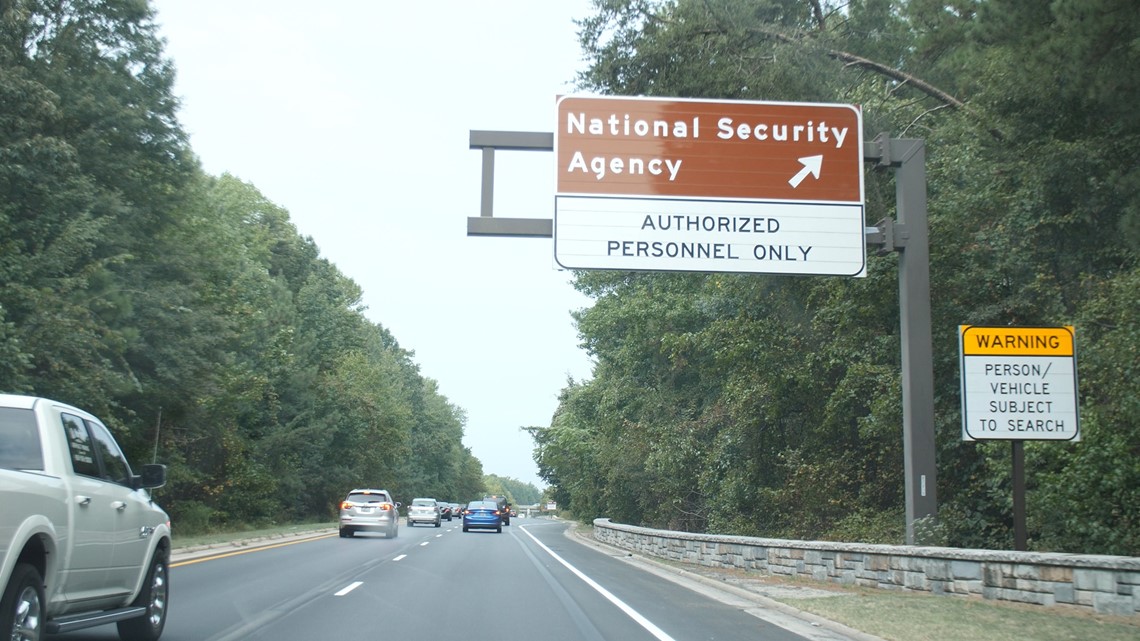
An NSA official authorized to discuss the agency’s concerns said the discussions are ongoing, and in no way at this stage represent a fatal blow to the project.
“We are trying to work through the concerns,” the official said. “We’re waiting for more specific data on the engineering next year, and that will shape how we move forward.”
Rogers of the Northeast Maglev sees the hurdles as commensurate with the ambitions of the project – an inevitable investment that will eventually arrive in America.
The question for him is: When?
“Our parents left us an infrastructure,” Rogers said, standing side-by-side with the Japanese maglev that set a world speed record of 361 MPH. “And in the last 30 or 40 years, we’ve abdicated that responsibility to ourselves and to our own children. So, if we’re not willing to do it, what is our solution – gridlock until we can’t move? We need to move beyond that.”
Watch Part 1 of our Maglev investigation:
Watch Part 2 of our Maglev investigation:
CBS News correspondent Lucy Craft contributed translation and research assistance from Tokyo and Yamanashi.


